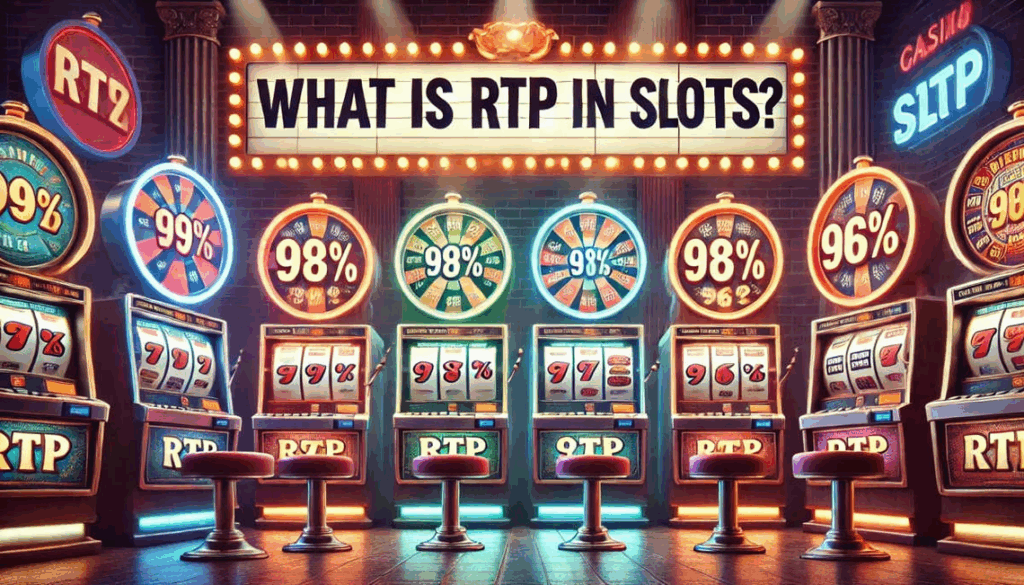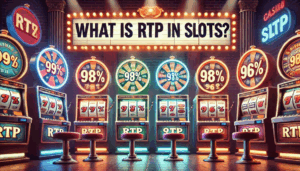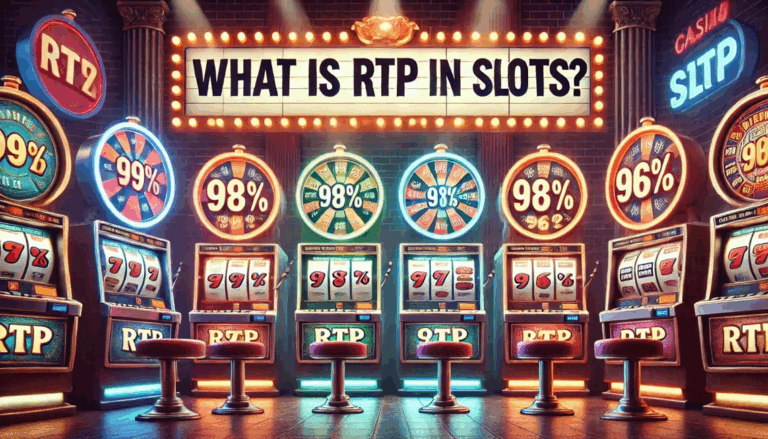The flashing lights, engaging themes, and promise of life-changing jackpots have made slot machines the most popular games in both land-based and online casinos throughout the Philippines. But while most players understand that slots are games of chance, few truly comprehend the sophisticated mathematics that determines their odds of winning. In 2025, slot machine technology has evolved significantly, yet the fundamental principles that govern their payouts remain shrouded in mystery for the average player. This comprehensive guide strips away that mystery to reveal how slot machine odds actually work in today’s gaming landscape.
The Foundation: Random Number Generators
At the heart of every modern slot machine lies a Random Number Generator (RNG), a sophisticated piece of software that generates thousands of random numbers per second. In 2025, these algorithms have become increasingly complex, but their primary function remains unchanged: to ensure that each spin is completely independent of previous and future spins.
“The RNG is what makes slots truly games of chance,” explains Dr. Maria Santos, a probability theory specialist who studies casino mathematics. “Many players believe that slots follow patterns or that they’re ‘due’ for a win after several losses, but the RNG ensures that each spin has exactly the same probability as any other.”
Modern RNGs used in Philippine casinos undergo rigorous testing by independent laboratories to verify their randomness. These tests involve millions of simulated spins to confirm that no patterns emerge and that results conform to statistical expectations. For players, this means that no strategy based on timing or pattern recognition can affect the odds of winning.
Understanding Return to Player (RTP)
Return to Player (RTP) is one of the most important metrics for understanding slot machine odds. Expressed as a percentage, RTP represents the theoretical amount of money that will be paid back to players over the long term.
In 2025, online slots available to Filipino players typically offer RTP values ranging from 92% to 97%, with physical casino slots generally offering slightly lower percentages between 85% and 93%. This means that for every ₱100 wagered on a 95% RTP slot, the mathematical expectation is that ₱95 will be returned to players over millions of spins.
However, there’s a crucial distinction that many players fail to grasp: RTP is calculated over an extremely long period and across all players, not within a single gaming session or for an individual player.

Hit Frequency vs. Volatility: Understanding the Player Experience
While RTP gives us the long-term theoretical return, it doesn’t tell us how that return will be distributed. This is where two additional mathematical concepts become important: hit frequency and volatility.
Hit Frequency
Hit frequency refers to how often a slot machine produces any winning combination. In 2025, typical hit frequencies range from:
- Low hit frequency: Wins on 10-20% of spins
- Medium hit frequency: Wins on 20-30% of spins
- High hit frequency: Wins on 30-40% of spins
A slot with high hit frequency will provide many small wins, keeping players engaged with regular positive feedback. However, these frequent wins are typically small and often less than the original bet—what industry insiders call “losses disguised as wins.”
Volatility (Variance)
Volatility measures how the RTP is distributed across different win sizes. This mathematical concept explains why two slots with identical 96% RTP can deliver radically different player experiences:
- Low volatility slots: Frequent small wins, rare large wins
- Medium volatility slots: Balanced distribution between small and large wins
- High volatility slots: Infrequent wins but potential for very large payouts
In 2025, game providers now openly disclose volatility ratings, though the exact mathematical models behind these ratings remain proprietary. For Filipino players, volatility choice should align with personal bankroll size and risk tolerance—high volatility games require larger bankrolls to withstand longer losing streaks.
The Mathematics Behind Paytables
The paytable of a slot machine is essentially a mathematical formula disguised as a list of prizes. When analyzed properly, it reveals crucial information about a game’s odds structure.
Take a simplified example of a modern 5-reel video slot with 20 paylines:
- Each reel might contain 50-100 virtual positions (called “stops”)
- If each reel has 64 stops, the total possible combinations are 64^5 = 1,073,741,824
- If the jackpot symbol appears once on each reel, the odds of hitting five in a row on a specific payline are 1 in 1,073,741,824
However, modern slots complicate this calculation by using weighted reels—a system where certain symbols appear more frequently than others. Low-paying symbols might be programmed to appear once every 6 stops, while high-paying symbols might appear only once every 20 or more stops.
This weighting system is why paytables can offer seemingly generous prizes while maintaining the mathematics that ensure the house maintains its edge. In 2025, some progressive online slots available to Filipino players advertise jackpots exceeding ₱50 million, yet the odds of winning might be 1 in several hundred million.
Bonus Features: Complexity by Design
Modern slots have evolved far beyond the simple three-reel machines of the past. Today’s games feature intricate bonus rounds, cascading reels, expanding wilds, and numerous other mechanics that significantly impact the mathematics behind the odds.
“Bonus features dramatically increase the complexity of calculating true odds,” explains Enrique Ramirez, a gaming mathematician at a major Philippine casino. “A game might have a base RTP of 92%, but bonus features contribute an additional 4% to reach a total RTP of 96%. However, those bonus features might trigger only once every 150-200 spins.”
This mathematical structure creates a highly volatile component within the game’s overall return structure. When analyzing the mathematics of modern slots in 2025, experts distinguish between:
- Base Game RTP: The return from regular spins without special features
- Feature Contribution: The portion of RTP allocated to various bonus features
- Total Theoretical RTP: The combined return from all game components
For players, this means that short-term results can vary dramatically from the theoretical return, especially if they never trigger the bonus features that contain a significant portion of the game’s total RTP.
Progressive Jackpots: Understanding the Math Trade-off
Progressive jackpot slots have become increasingly popular among Filipino players in 2025, with networked games offering life-changing sums that frequently make headlines. However, these enticing jackpots come with a mathematical trade-off that many players fail to recognize.
In progressive slots, a portion of each wager (typically 2-5%) is added to the jackpot pool. This allocation effectively reduces the base game RTP, creating a mathematical structure where:
- Base Game RTP: Might be as low as 88-90%
- Jackpot Contribution: 2-5% of each bet
- Total Theoretical RTP: 92-95%
The crucial detail is that the jackpot contribution only translates to actual returns for the extremely rare winners. For the overwhelming majority of players, the effective RTP is essentially just the base game return.
“Progressive jackpots are essentially a voluntary tax that most players pay but never benefit from,” notes Dr. Santos. “The mathematics ensures that the vast majority of players will experience a lower effective return than they would on non-progressive games.”

Odds Variation Between Physical and Online Slots
In 2025, Filipino players can access slots through multiple channels: land-based casinos, online casinos, and even mobile gaming apps. The mathematics behind the odds varies significantly between these platforms:
Physical Casino Slots
- Typical RTP range: 85-93%
- Limited by physical reel constraints
- RTP is fixed and cannot be modified without physical intervention
- Often grouped by denomination with higher bets offering slightly better odds
Online Casino Slots
- Typical RTP range: 92-97%
- Unlimited by physical constraints, allowing more complex mathematics
- RTP may be adjustable by operators within ranges set by developers
- Generally offer better odds due to lower operating costs
This mathematical advantage in online slots is why many sophisticated players in the Philippines have shifted their play to digital platforms, where the house edge is typically 2-5% lower than comparable physical machines.
How Casinos Calculate Their Edge
From the casino’s perspective, the mathematics of slot machines is surprisingly straightforward. The house edge is simply 100% minus the RTP. For a slot with a 95% RTP, the casino’s mathematical expectation is to keep 5% of all money wagered over time.
This edge allows casinos to calculate their expected revenue with remarkable precision:
codeExpected Revenue = Total Amount Wagered × House Edge
For example, if a slot machine accepts ₱10 million in wagers per month with a 5% house edge, the casino’s expected monthly revenue from that machine is ₱500,000.
The mathematics ensures that even with occasional large payouts, the casino will be profitable over time. This is why Filipino casino operators can confidently offer multimillion-peso jackpots—the underlying mathematics guarantees their profitability as long as they have sufficient play volume.
The Gambler’s Fallacy and Slot Machine Odds
No discussion of slot machine mathematics would be complete without addressing the Gambler’s Fallacy—the mistaken belief that if something happens more frequently than normal during a given period, it will happen less frequently in the future, and vice versa.
This mathematical misconception leads many players to incorrect conclusions about slot odds:
- Believing a machine is “due” for a win after many losses
- Thinking a machine that recently paid a jackpot is now “cold”
- Assuming specific betting patterns can influence outcome probabilities
“The RNG ensures complete independence between spins,” emphasizes Dr. Santos. “The probability of winning on the next spin is exactly the same whether you’ve lost 20 times in a row or won the last five spins. The machine has no memory of previous outcomes.”
This mathematical truth means that strategies based on the Gambler’s Fallacy are fundamentally flawed and cannot improve a player’s odds of winning.
Modern Developments in Slot Mathematics
The year 2025 has brought several innovations in slot machine mathematics that Filipino players should be aware of:
Dynamic RTP Systems
Some online slots now feature dynamic RTP systems that adjust the theoretical return based on player behavior, market conditions, or even time of day. These systems operate within regulatory parameters but optimize the casino’s mathematical edge based on sophisticated algorithms.
Skill-Based Elements
A growing trend in the Philippine market is the introduction of skill-based elements within otherwise random slots. These games incorporate mini-games where player decisions can affect the outcome, creating a hybrid mathematical model:
- Base Game: Pure RNG with fixed mathematical return
- Skill Component: Variable return based on player performance
- Total RTP: Combination of both elements
The mathematics ensures that even perfect skill execution cannot overcome the house edge, but skillful play can increase the effective RTP within predefined boundaries.
Personalized Mathematics
Perhaps the most sophisticated development is the emergence of personalization algorithms that adjust game mathematics based on individual player profiles. These systems operate within strict regulatory limits but can subtly modify:
- Volatility based on playing patterns
- Bonus trigger frequencies based on engagement metrics
- Game recommendation engines based on mathematical preferences
While the fundamental house edge remains, these systems optimize the mathematical experience to match player preferences, potentially increasing session duration and total wagers.
How to Use Odds Knowledge to Your Advantage
Understanding the mathematics behind slot odds won’t change the fundamental house edge, but it can help Filipino players make more informed decisions:
- Choose games with higher RTPs: The difference between a 93% and a 96% RTP slot is substantial over time.
- Select volatility based on your bankroll: Higher volatility games require larger bankrolls to withstand variance.
- Understand the odds of bonus features: Know that games with elaborate bonus rounds often have lower base game returns.
- Recognize the progressive jackpot trade-off: Be aware that the effective RTP is lower if you don’t win the jackpot.
- Set realistic expectations: The mathematics guarantees that the house wins over time, so play for entertainment with a predetermined budget.
Conclusion: The Unchangeable Mathematics
Despite technological advancements, the fundamental mathematics of slot machines in 2025 remains governed by the same principles that have always determined gambling odds: probability, statistics, and the immutable law of large numbers.
While game designs have become more engaging and visually stunning, the underlying mathematical structure ensures that slots remain negative expectation games where the house maintains an edge. For Filipino players, the best approach is to understand these mathematical realities, choose games that align with personal preferences and risk tolerance, and view gambling primarily as entertainment rather than a potential source of profit.
The colorful animations and exciting features may disguise it, but at its core, every slot machine is a carefully calibrated mathematical equation designed to provide entertainment while ensuring a predictable return for the operator. Understanding this equation doesn’t change the odds, but it does allow for more informed and responsible play.





